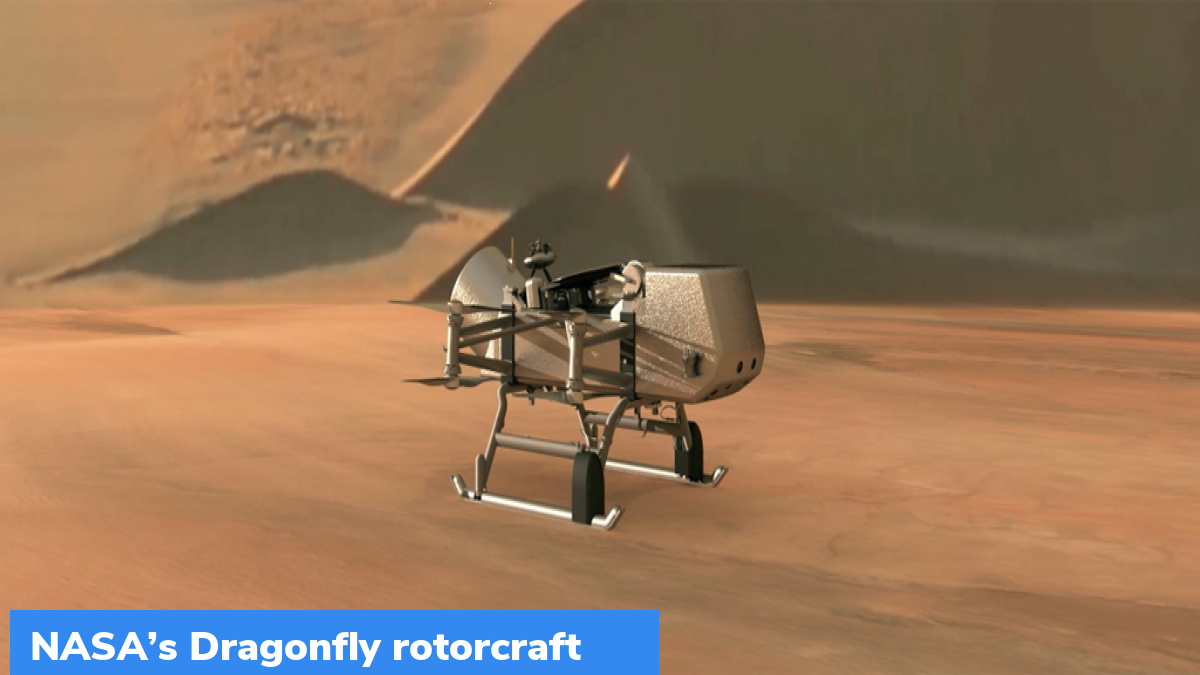NASA’s Dragonfly rotorcraft
Dragonfly rotorcraft will be launched by the American space agency in 2027 to study Titan – the largest moon of Saturn.
Key facts
- Dragonfly rotorcraft is scheduled to be launched in 2027 and reach the Selk Crater region on Titan in the year 2034.
- The spacecraft, weighing less than 1,000 pounds, will look similar to a military transport helicopter.
- It will operate like a drone to understand the composition of Titan and conduct research to understand the origin of life on Earth.
- This would be the first aircraft on the Saturn’s moon and the first-ever fully controlled atmospheric flight on any moon.
- It will be the first flying machine targeting a celestial body in the outer solar system.
- Titan is the target of NASA’s Dragonfly rotorcraft since it is an ideal destination to research prebiological chemistry, astrobiology and the potential habitability of an extra-terrestrial world.
- Using all the radar images from Cassini spacecraft for over 13 years, scientists have successfully characterized Selk Crater region – the future destination of the Dragonfly rotorcraft.
- Researchers used angled shadows and radar reflectivity to accurately determine the surface’s properties. They were able to map 6 terrains in the site, which helped them measure the rim height of the Selk Crater.
- This will enable the smooth landing of the NASA rotorcraft and help in its accurate exploration of Titan.
- Dragonfly is set to land on an equatorial, dry region of the Saturn’s moon, which has frigid and thick atmosphere having hydrocarbon.
- While liquid methane rain frequently occurs in Titan, it is more like a desert seen on the Earth, with the presence of dunes, small mountains and an impact crater.
- Using the data obtained from the Cassini spacecraft, scientists were able to analyse less than 10 per cent of Titan’s surface. This means that there is a possibility of the presence of small rivers and landscapes that remain unnoticed.
Month: Current Affairs - October, 2022
Category: Science & Technology Current Affairs


